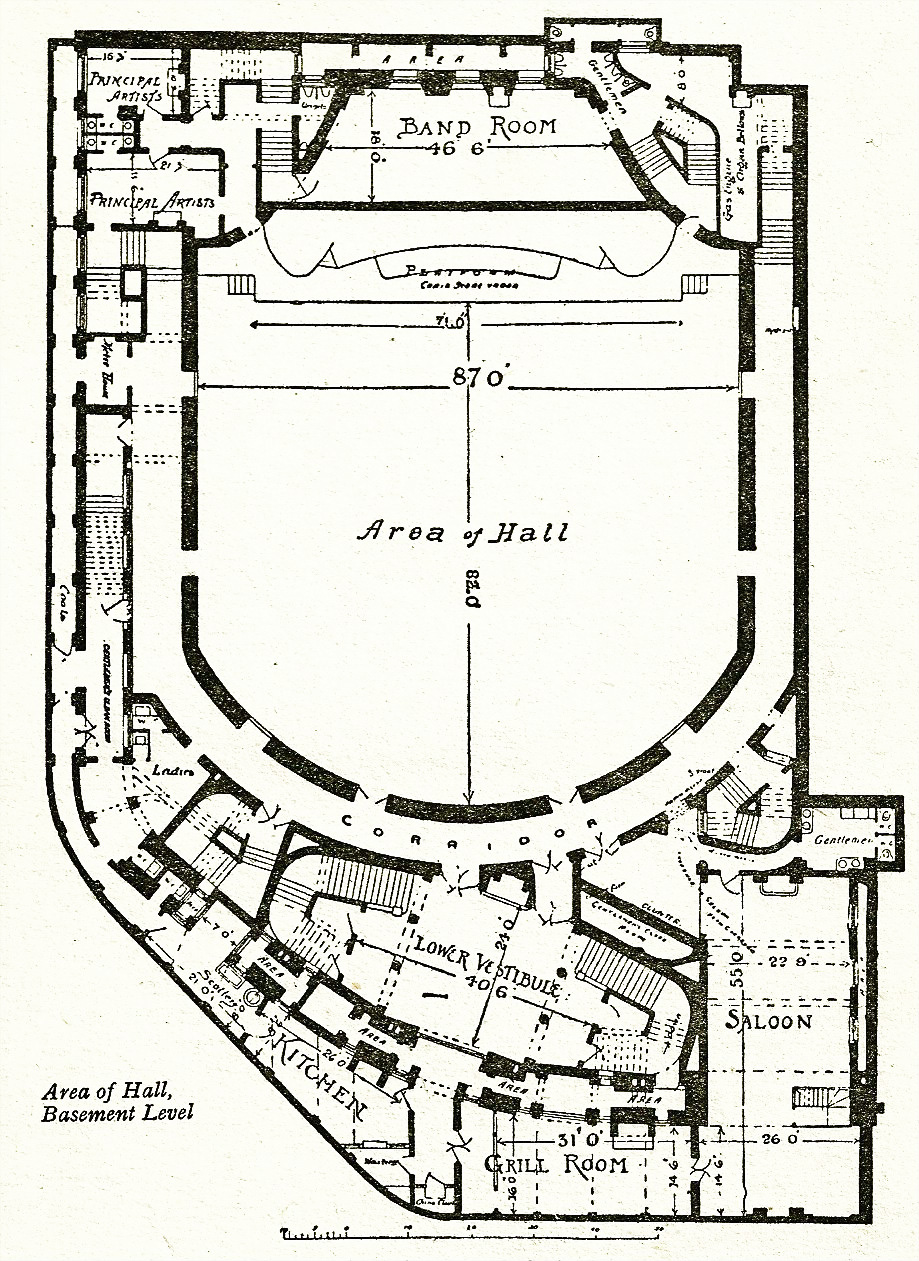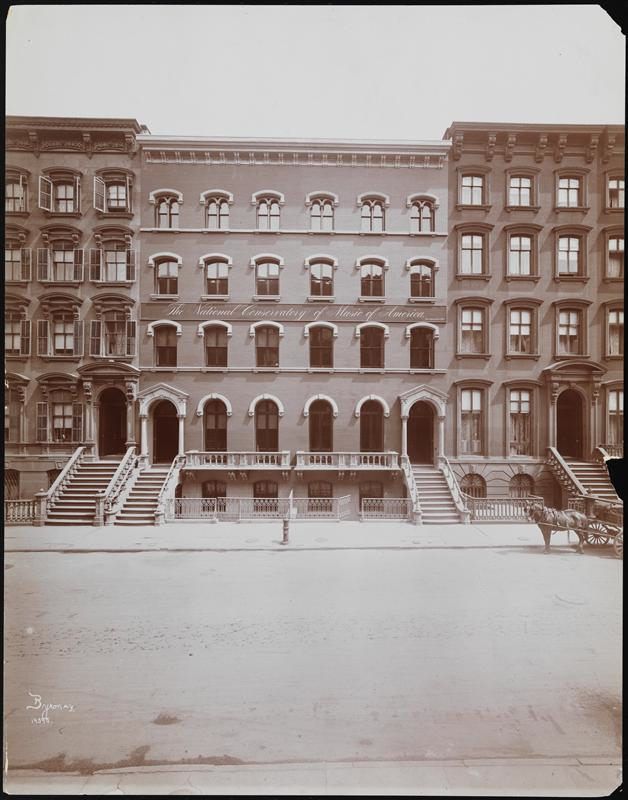|
Cello Concerto (Dvořák)
The Cello Concerto in B minor, Op. 104, B. 191, is the last solo concerto by Antonín Dvořák. It was written in 1894 for his friend, the cellist Hanuš Wihan, but was premiered in London on March 19, 1896, by the English cellist Leo Stern. Structure The piece is scored for a full romantic orchestra (with the exception of a 4th horn), containing two flutes (second doubling piccolo), two oboes, two clarinets, two bassoons, three horns, two trumpets, three trombones, tuba, timpani, triangle (last movement only), and strings, and is in the standard three-movement concerto format: Total duration: approximately 40 minutes. History In 1865, early in his career, Dvořák started a Cello Concerto in A major (B. 10). The piece was written for Ludevít Peer, whom he knew well from the Provisional Theatre Orchestra in which they both played. He handed the cello score (with piano accompaniment) over to Peer for review but neither bothered to finish the piece. It was ... [...More Info...] [...Related Items...] OR: [Wikipedia] [Google] [Baidu] |
Concerto
A concerto (; plural ''concertos'', or ''concerti'' from the Italian plural) is, from the late Baroque era, mostly understood as an instrumental composition, written for one or more soloists accompanied by an orchestra or other ensemble. The typical three- movement structure, a slow movement (e.g., lento or adagio) preceded and followed by fast movements (e.g. presto or allegro), became a standard from the early 18th century. The concerto originated as a genre of vocal music in the late 16th century: the instrumental variant appeared around a century later, when Italians such as Giuseppe Torelli started to publish their concertos. A few decades later, Venetian composers, such as Antonio Vivaldi, had written hundreds of violin concertos, while also producing solo concertos for other instruments such as a cello or a woodwind instrument, and concerti grossi for a group of soloists. The first keyboard concertos, such as George Frideric Handel's organ concertos and Johann Seba ... [...More Info...] [...Related Items...] OR: [Wikipedia] [Google] [Baidu] |
String Instrument
String instruments, stringed instruments, or chordophones are musical instruments that produce sound from vibrating strings when a performer plays or sounds the strings in some manner. Musicians play some string instruments by plucking the strings with their fingers or a plectrum—and others by hitting the strings with a light wooden hammer or by rubbing the strings with a bow. In some keyboard instruments, such as the harpsichord, the musician presses a key that plucks the string. Other musical instruments generate sound by striking the string. With bowed instruments, the player pulls a rosined horsehair bow across the strings, causing them to vibrate. With a hurdy-gurdy, the musician cranks a wheel whose rosined edge touches the strings. Bowed instruments include the string section instruments of the orchestra in Western classical music (violin, viola, cello and double bass) and a number of other instruments (e.g., viols and gambas used in early music from the Baroqu ... [...More Info...] [...Related Items...] OR: [Wikipedia] [Google] [Baidu] |
Queen's Hall
The Queen's Hall was a concert hall in Langham Place, London, Langham Place, London, opened in 1893. Designed by the architect Thomas Knightley, it had room for an audience of about 2,500 people. It became London's principal concert venue. From 1895 until 1941, it was the home of the The Proms, promenade concerts ("The Proms") founded by Robert Newman (impresario), Robert Newman together with Henry Wood. The hall had drab decor and cramped seating but superb acoustics. It became known as the "musical centre of the [British] British Empire, Empire", and several of the leading musicians and composers of the late 19th and early 20th centuries performed there, including Claude Debussy, Edward Elgar, Maurice Ravel and Richard Strauss. In the 1930s, the hall became the main London base of two new orchestras, the BBC Symphony Orchestra and the London Philharmonic Orchestra. These two ensembles raised the standards of orchestral playing in London to new heights, and the hall's resident ... [...More Info...] [...Related Items...] OR: [Wikipedia] [Google] [Baidu] |
Lužany (Plzeň-South District)
Lužany is a municipality and village in Plzeň-South District in the Plzeň Region of the Czech Republic. It has about 700 inhabitants. Lužany lies approximately south of Plzeň and south-west of Prague Prague ( ; cs, Praha ; german: Prag, ; la, Praga) is the capital and largest city in the Czech Republic, and the historical capital of Bohemia. On the Vltava river, Prague is home to about 1.3 million people. The city has a tempera .... Administrative parts Villages of Dlouhá Louka, Zelená Hora and Zelené are administrative parts of Lužany. References Villages in Plzeň-South District {{Plzeň-geo-stub ... [...More Info...] [...Related Items...] OR: [Wikipedia] [Google] [Baidu] |
Cadenza
In music, a cadenza (from it, cadenza, link=no , meaning cadence; plural, ''cadenze'' ) is, generically, an improvised or written-out ornamental passage played or sung by a soloist or soloists, usually in a "free" rhythmic style, and often allowing virtuosic display. During this time the accompaniment will rest, or sustain a note or chord. Thus an improvised cadenza is indicated in written notation by a fermata in all parts. A cadenza will usually occur over the final or penultimate note in a piece, the lead-in (german: Eingang, link=no) or over the final or penultimate note in an important subsection of a piece. It can also be found before a final coda or ritornello. In concerti The term ''cadenza'' often refers to a portion of a concerto in which the orchestra stops playing, leaving the soloist to play alone in free time (without a strict, regular pulse) and can be written or improvised, depending on what the composer specifies. Sometimes, the cadenza will include sma ... [...More Info...] [...Related Items...] OR: [Wikipedia] [Google] [Baidu] |
Michael Steinberg (music Critic)
Carl Michael Alfred Steinberg (4 October 1928 – 26 July 2009) was an American music critic and author who specializes in classical music. He was best known, according to ''San Francisco Chronicle'' music critic Joshua Kosman, for "the illuminating, witty and often deeply personal notes he wrote for the San Francisco Symphony's program booklets, beginning in 1979." He contributed several entries to the ''New Grove Dictionary of Music and Musicians'', wrote articles for music journals and magazine, notes for CDs, and published a number of books on music, both collected published annotations and new writings. Life and career Born in Breslau, Germany (now Wrocław, Poland), Steinberg left Germany in 1939 as one of the ''Kindertransport'' child refugees and spent four years in England. He immigrated to the United States in 1943 with his brother and mother and earned a degree in musicology from Princeton University (the classical-music scholar and pianist Charles Rosen was his room ... [...More Info...] [...Related Items...] OR: [Wikipedia] [Google] [Baidu] |
Symphony No
A symphony is an extended musical composition in Western classical music, most often for orchestra. Although the term has had many meanings from its origins in the ancient Greek era, by the late 18th century the word had taken on the meaning common today: a work usually consisting of multiple distinct sections or movements, often four, with the first movement in sonata form. Symphonies are almost always scored for an orchestra consisting of a string section (violin, viola, cello, and double bass), brass, woodwind, and percussion instruments which altogether number about 30 to 100 musicians. Symphonies are notated in a musical score, which contains all the instrument parts. Orchestral musicians play from parts which contain just the notated music for their own instrument. Some symphonies also contain vocal parts (e.g., Beethoven's Ninth Symphony). Etymology and origins The word ''symphony'' is derived from the Greek word (), meaning "agreement or concord of sound", "concer ... [...More Info...] [...Related Items...] OR: [Wikipedia] [Google] [Baidu] |
Victor Herbert
Victor August Herbert (February 1, 1859 – May 26, 1924) was an American composer, cellist and conductor of English and Irish ancestry and German training. Although Herbert enjoyed important careers as a cello soloist and conductor, he is best known for composing many successful operettas that premiered on Broadway from the 1890s to World War I. He was also prominent among the Tin Pan Alley composers and was later a founder of the American Society of Composers, Authors, and Publishers (ASCAP). A prolific composer, Herbert produced two operas, a cantata, 43 operettas, incidental music to 10 plays, 31 compositions for orchestra, nine band compositions, nine cello compositions, five violin compositions with piano or orchestra, 22 piano compositions and numerous songs, choral compositions and orchestrations of works by other composers, among other music. In the early 1880s, Herbert began a career as a cellist in Vienna and Stuttgart, during which he began to compose orchestral m ... [...More Info...] [...Related Items...] OR: [Wikipedia] [Google] [Baidu] |
National Conservatory Of Music Of America
The National Conservatory of Music of America was an institution for higher education in music founded in 1885 in New York City by Jeannette Meyers Thurber. The conservatory was officially declared defunct by the state of New York in 1952, although for all practical pedagogical purposes, it had ceased to function much earlier than that. Between its founding and about 1920, however, the conservatory played an important part in the education and training of musicians in the United States, and for decades Thurber attempted to turn it into a federally-supported national conservatory in a European style. A number of prominent names are associated with the institution, including that of Victor Herbert and Antonín Dvořák, director of the conservatory from Sep. 27, 1892 to 1895. 34pp. Dvorak was compensated $15,000/year. (It was at the conservatory that Dvořák composed his famous E minor Symphony and subtitled it, at Thurber's suggestion, '' From the New World''.) Active years The i ... [...More Info...] [...Related Items...] OR: [Wikipedia] [Google] [Baidu] |
New York City
New York, often called New York City or NYC, is the most populous city in the United States. With a 2020 population of 8,804,190 distributed over , New York City is also the most densely populated major city in the United States, and is more than twice as populous as second-place Los Angeles. New York City lies at the southern tip of New York State, and constitutes the geographical and demographic center of both the Northeast megalopolis and the New York metropolitan area, the largest metropolitan area in the world by urban landmass. With over 20.1 million people in its metropolitan statistical area and 23.5 million in its combined statistical area as of 2020, New York is one of the world's most populous megacities, and over 58 million people live within of the city. New York City is a global cultural, financial center, financial, The Entertainment Capital of the World, entertainment, and Media in New York City, media center with a significant influenc ... [...More Info...] [...Related Items...] OR: [Wikipedia] [Google] [Baidu] |
Cello Concerto In A Major (Dvořák)
Antonín Dvořák wrote his first Cello Concerto in A major, B. 10 in 1865. Background Unlike his famous B minor Cello Concerto, Op. 104, Dvořák's A major Concerto is traditionally overlooked, so much so that the later work is only rarely called "No. 2." There are two reasons for this fate for the three-movement earlier piece: Dvořák left it in piano-score form, un-orchestrated; and it sprawls to some 55 minutes, with outer movements about 25 and 21 minutes long, respectively. Written for cellist Ludevít Peer, it was rediscovered by composer Günter Raphael years after Dvořák's death. Raphael orchestrated and heavily edited it in the late 1920s, making it more his own than Dvořák's.John Clapham, 1979, ''Dvořák'', Norton, writes that Raphael's "edition" is "so unlike Dvořák's original, that it must be regarded as a travesty of Dvořák's intentions." The 1970s brought a second editor, the Dvořák expert and curator Jarmil Burghauser, who, along with cellist Mi ... [...More Info...] [...Related Items...] OR: [Wikipedia] [Google] [Baidu] |





